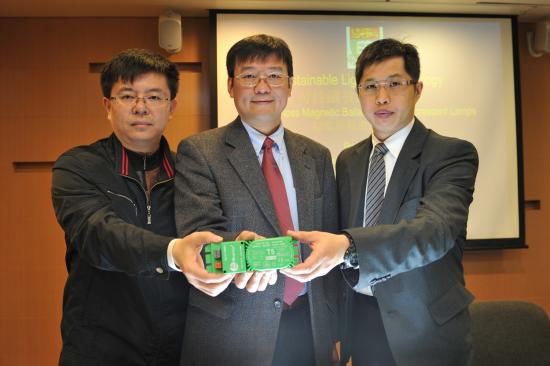An HKU Department of Electrical & Electronic Engineering research team led by Professor Ron Hui, Chair of Power Electronics has achieved a major breakthrough in lighting technology with the invention of the environmentally friendly “Ultra-low-loss magnetic ballasts” for use in fluorescent lamps.
The new ballasts are having higher energy efficiency, longer product lifetime and can be re-cycled compared to the electronic ones now commonly in use worldwide. The new energy saving magnetic device has been adopted by the lighting industry.
The invention will also help promote the new concept of “Sustainable Lighting” which measures sustainability according to three important criteria of
(1) High energy efficiency
(2) Long product lifetime (>10 years)
(3) Recyclability (>80% materials recyclable)
The current Energy Labeling Scheme emphasizes only energy efficiency.
Fluorescent lamps have been used as a major light source worldwide since its invention at early 1940’s. Over the last 30 years, electronic ballasts have emerged as a more energy efficient solution to replace the old magnetic ballasts, a device to limit the current and power discharge of the lamps.
However, the electronic waste issue increases with the increasing popularity of electronic ballasts. According to market survey, over 200 million units of electronic ballasts were made in 2005. Electronic ballasts have typical lifetime of 3 to 5 years, cannot be recycled and therefore their disposal could lead to serious environmental problems.
For the research background, please visit http://www.cpao.hku.hk/media/EEEe.pdf
Source: The University of Hong Kong










